Monster: The Series
Monster is an anthology created by Ryan Murphy and Ian Brennan. This is the third installment in the franchise, following DAHMER — Monster: The Jeffrey Dahmer Story (2022) and Monsters: The Lyle and Erik Menendez Story (2024). The new season, directed by Max Winkler, is now available on Netflix.
The anthology aims to examine how monsters are not born, they are made, in other words to explore the origins of human horror shaped by environment, psychology, and cultural myth.
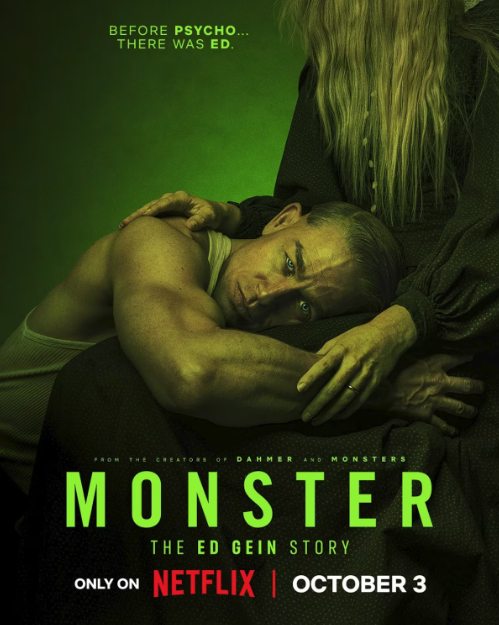
The main cast of Monster: The Ed Gein Story includes Charlie Hunnam as Ed Gein, Laurie Metcalf as his mother Augusta Gein, Suzanna Son as Adeline Watkins, Tom Hollander as Alfred Hitchcock, and Joey Pollari as Anthony Perkins.
Set in 1950s rural Plainfield, Wisconsin, the season follows Ed Gein’s isolated life, his unhealthy relationship with his mother Augusta, and his descent into criminal behavior: grave robbing, murder, and the creation of horrifying objects made from human remains. In parallel, the series intercuts fictional Hollywood sequences that show how writers and filmmakers, including Alfred Hitchcock, Tobe Hooper (The Texas Chain Saw Massacre), and Jonathan Demme (The Silence of the Lambs), drew inspiration from Gein and how his story has influenced the horror genre.
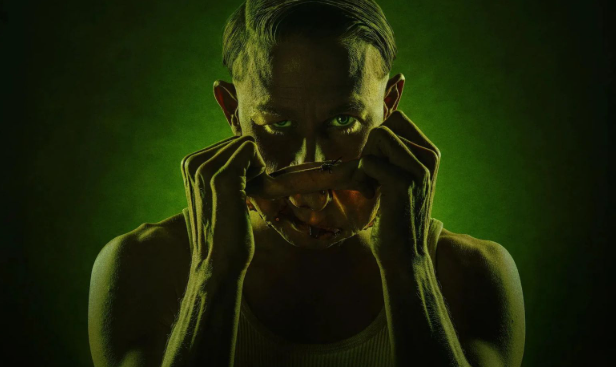
Reviews have been strong and divisive. The Guardian accuses the show of being more interested in voyeurism than in meaningful storytelling, calling it an immoral exploration. The Hollywood Reporter describes Monster: The Ed Gein Story as horrific. On Rotten Tomatoes, critics scored the season 19 percent while audiences gave it 55 percent.
Some outlets still highlight its merits. Heaven of Horror praises Charlie Hunnam’s performance and the boldness of bringing Gein’s story into the open, calling this season the darkest entry in the anthology so far. Cicero’s Heaven of Horror notes that the series tries to show who he was rather than simply what he did.
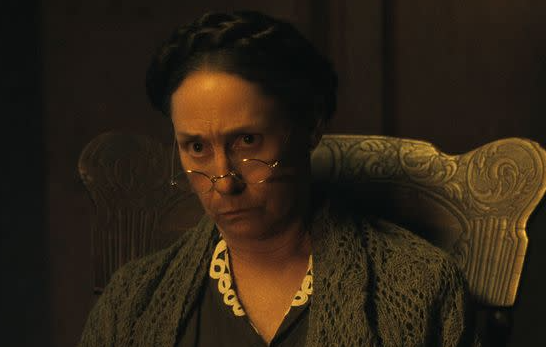
The Story
To understand the morbid fascination with Ed Gein, it helps to revisit the facts.
Edward Theodore Gein was born on August 27, 1906, in La Crosse, Wisconsin. He was the second son of an alcoholic father and a fanatically religious mother whose warped moral code deeply affected his relationship with sex, guilt, and affection. After several family losses, he became a recluse on the family farm near Plainfield. He worked occasional jobs, but isolation appears to have worsened his mental state and contributed to his criminal behavior.
The first recorded victim is Mary Hogan, a tavern owner who disappeared on December 8, 1954. Years later, when Gein’s farm was searched, her severed head was found there. This was one of the murders to which Gein later confessed.
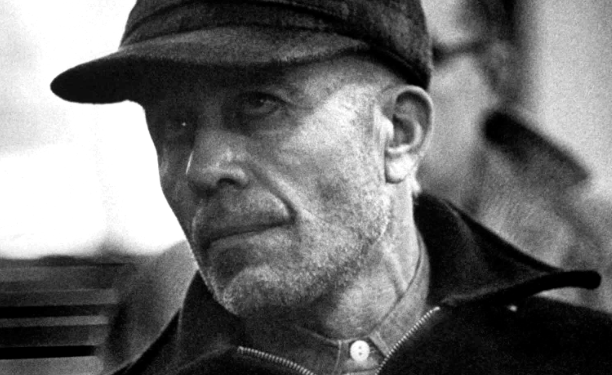
The second confirmed murder occurred on November 16, 1957, when hardware store owner Bernice Worden went missing. A receipt for antifreeze tied Gein to her store that morning. Later that day her body was found on Gein’s property, shot, decapitated, and hanging in a shed. Gein was arrested and confessed to her murder.
Records also show that in 1944 Ed’s brother Henry Gein died in a fire near the family farm. Although head injuries later prompted speculation about Ed’s involvement, Henry’s death was officially ruled accidental, and there was not enough evidence to charge Ed with another homicide.
When Bernice Worden’s remains were discovered, investigators also found that Ed had been exhuming graves and making items from human remains. Gein admitted to multiple grave robberies.
Ultimately, investigations confirmed two murders by Ed Gein. While books and accounts have suggested other victims, those claims have never been proven.

Much of the mythology around Gein comes from the grotesque objects he made from human remains. He reportedly fashioned macabre costumes that resembled his mother, which he wore in disturbing rituals. Despite popular portrayals calling him a serial killer, Gein’s confirmed victim count of two and the pattern of grave desecration place him closer to the category of murderer and grave robber rather than a prototypical serial killer.
After his arrest, Gein was initially declared insane and institutionalized. In 1968 he was found competent to stand trial and convicted of the murder of Bernice Worden, though he remained committed to psychiatric institutions. Gein died on July 26, 1984, of complications from lung cancer at the Mendota Mental Health Institute in Madison, Wisconsin.
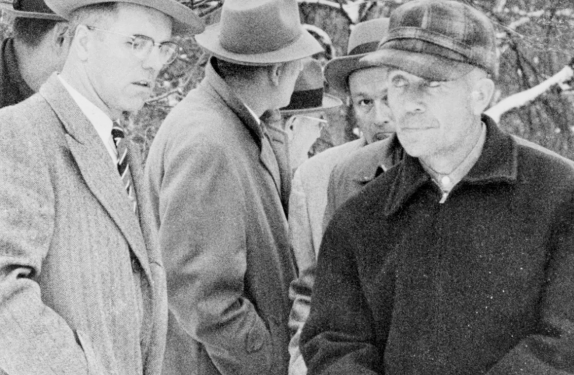
Diagnosed with schizophrenia, Gein displayed pathological grief over his mother and engaged in identity-related delusions, using female skin garments as a symbolic attempt to reunite with her. This interpretation is supported by forensic evidence and his own confessions. The documented facts concern his fixation on his mother, the preservation of her room, the creation of human artifacts, grave robbing, and the two murders.
After his arrest, Gein’s farmhouse became a site of morbid curiosity and was listed for public auction with an inventory of property. Before it could become a spectacle the house burned down on March 20, 1958. The lot remains empty to this day and is remembered as a place of tragedy and rumor. Historical records from Wisconsin indicate neighbors were unhappy with the stigma and attention the property brought to the community.
The factual conclusion is that Gein’s motives, psychological diagnoses, and symbolic meanings should be examined carefully and compared with official reports from the time. Beyond that, interpretations belong to the realm of speculation and fiction.
The Pathology
Gein’s diagnosis serves as a reference point to help understand what might have been happening inside his mind. However, it is important to remember that psychiatry and the study of mental disorders have evolved significantly since the 1950s. What we know today about schizophrenia is much clearer than what was understood at that time.
Schizophrenia is a chronic and complex mental disorder that affects perception, thought, and emotion. Those affected often experience delusions and hallucinations (frequently hearing voices), as well as disorganized speech and behavior. They may also display “negative” symptoms such as apathy, social withdrawal, and emotional detachment. Cognitive impairments can also occur, including difficulty concentrating, poor working memory, and reduced executive functioning, all of which affect daily life.
Treatment for schizophrenia typically combines antipsychotic medication with long-term psychosocial interventions.
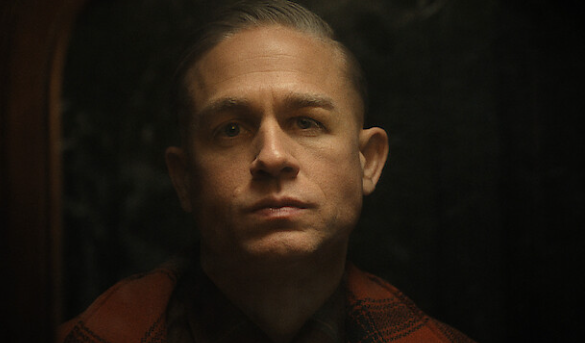
Regarding the sensitive topic of violence, which directly connects to Gein’s case, some clarification is necessary.
Scientific literature indicates a relatively higher risk of violent behavior among people with psychotic disorders (including schizophrenia) compared to the general population. However, most of this increased risk is explained by comorbidities (such as substance-induced psychosis) and the use of alcohol or other drugs.
In population-based studies, when substance abuse cases are excluded, the risk of violence drops substantially. In fact, the remaining risk often resembles that of people with substance use disorders rather than schizophrenia itself. In other words, while the risk exists, it is much lower among individuals who do not use or abuse substances.
It is also important to distinguish between relative risk and absolute risk. Long-term studies (spanning over 35 years) show that the absolute risk of committing acts of violence remains low: less than 1 in 20 for women and less than 1 in 4 for men diagnosed with schizophrenia-spectrum disorders. While these numbers might seem notable, they do not support the stigma that “schizophrenia equals violence.” The overwhelming majority of people with schizophrenia never commit violent acts.
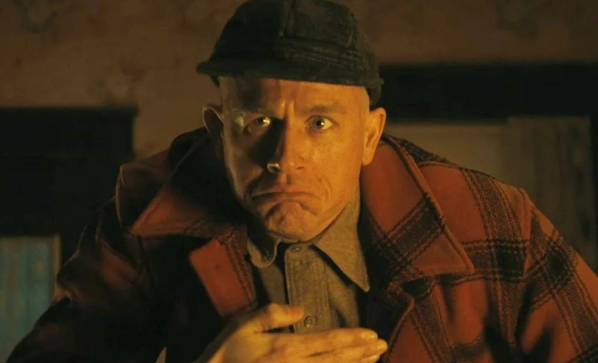
Another often overlooked fact is that people with schizophrenia are far more likely to be victims of violence than perpetrators. In some studies, victimization rates exceed perpetration several times over, reflecting social factors such as vulnerability, stigma, unstable housing, unemployment, and exposure to violence. These are issues that require attention from public health and social policies.
When, then, can the illness contribute to homicide? The risk increases in specific contexts: untreated active psychosis (severe paranoid delusions or command hallucinations), comorbid substance use, a prior history of violence, high social stress, and access to weapons. Even in such situations, only a small minority of patients are affected. Continuous treatment, medication adherence, and psychosocial support greatly reduce this risk. In short, addressing the illness and its comorbidities significantly decreases the likelihood of violent behavior.
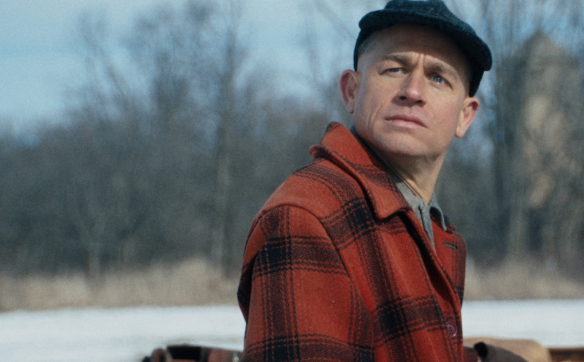
Finally, from a legal and forensic perspective, a diagnosis of schizophrenia does not automatically imply legal insanity. The “insanity defense” is a legal, not clinical, concept. Laws vary by jurisdiction, but the main question is whether, at the time of the act, the defendant was incapable of understanding the nature or wrongfulness of their actions, or of acting according to that understanding. Having a mental disorder alone is not enough; the defendant must demonstrate a direct link between active psychosis and the legal definition of incapacity. In many countries or states, this standard is difficult to prove, and successful insanity defenses are rare.
In summary, schizophrenia is a serious but treatable disorder, and the notion that it “drives” someone to kill is a myth fueled by extreme cases and pop culture portrayals. The risk increases mainly in situations involving untreated psychosis and substance abuse, both of which can be clinically prevented and treated.
Differences Between the True Story and the Series Monster
A fictional work is not required to be completely factual. Many directors and writers take creative liberties when adapting the life of a well-known figure for the screen. This can either enhance or harm the viewing experience, and sometimes knowing what is real and what is fiction in a series or film can influence whether we decide to watch it.
Now that we understand the true story of Gein and his pathology, we can compare where director Max Winkler stayed faithful to history and where he leaned into creative license.
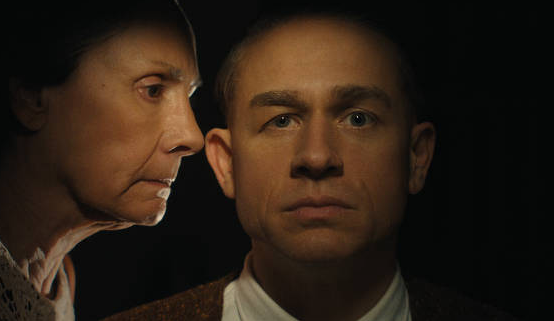
1 – The reason for Gein’s arrest was a receipt for antifreeze, not a note in a gift box.
Gein was arrested after Bernice Worden’s disappearance. A receipt for antifreeze linked him to her store, leading police to his farm, where human remains and objects made from them were discovered.
2 – The alleged romance between Gein and Bernice
Gein and Bernice were never romantically involved. There is no historical evidence to support this claim.
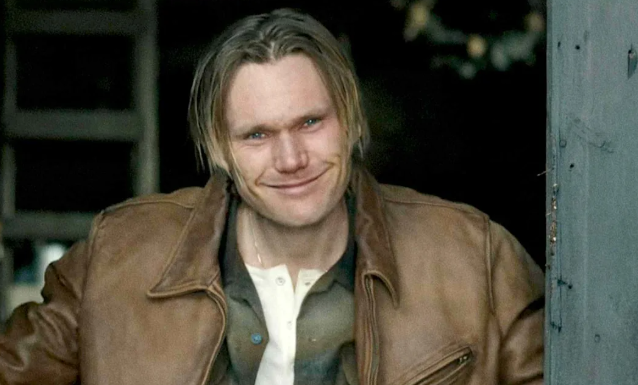
3 – Grave robbing and human-made artifacts
Historical records confirm that Gein did indeed rob graves and craft items from human remains. These findings were extensively documented during the investigation of his property.
4 – The “girlfriend/accomplice” Adeline Watkins
The emotional relationship between Adeline Watkins and Gein, depicted as companion and accomplice, has no basis in official records. It is a fictional creation for dramatic purposes.
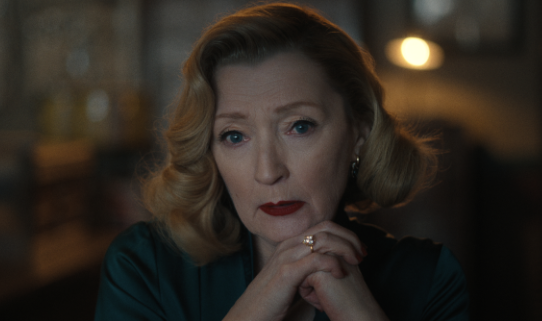
5 – Necrophilia
Popular accounts and some media reports have linked Gein to necrophilia, but later investigations remind us that Gein denied it and no forensic evidence confirmed the claim. The series exaggerates this controversial element.
6 – Letters with Richard Speck and “help” in capturing Ted Bundy
The series suggests correspondence and exchanged clues between Gein and Bundy, but no historical record supports this. It is purely a fictional narrative device.
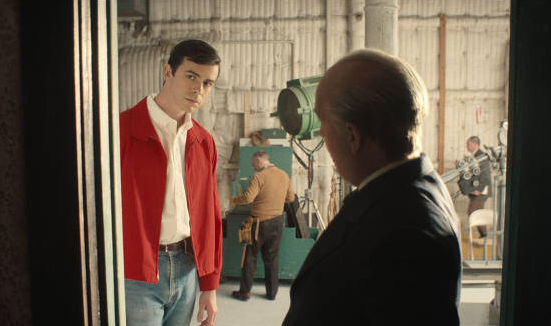
7 – Inspiration for Hitchcock’s Psycho and The Texas Chain Saw Massacre
Yes, Gein inspired the novel Psycho (1959) and, by extension, the 1960 film adaptation. However, there is no evidence of direct meetings between Alfred Hitchcock and Anthony Perkins, as dramatized in the series. That connection is creative, not historical.
He also inspired The Texas Chain Saw Massacre, but there is no documentation of Gein chasing two hunters with a chainsaw, as portrayed in the show.
8 – Sexuality
Anthony Perkins was indeed gay but lived much of his life in secrecy due to social norms and Hollywood’s pressures at the time.
He later married photographer Berry Berenson in 1973, and they had two sons. In the 1980s, he was diagnosed with H I V, which he kept private for years. He died from AIDS-related complications in 1992.
A curious fact: Perkins’ eldest son, Osgood “Oz” Perkins, followed in his father’s footsteps as a filmmaker. He directed horror films such as Longlegs, The Blackcoat’s Daughter, and Gretel & Hansel.
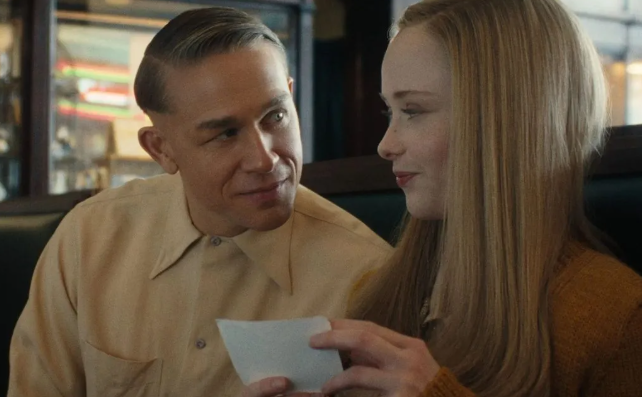
Point of View
This perspective could help remove Gein from the pedestal that some psychopaths place him on as an idol, reframing him as a victim of his illness and environment, factors that led him to take more lives in a tragic chain reaction. Doing so would strip away the grotesque image that inspires morbid admiration while emphasizing the importance of mental health treatment.
However, when there are no factual foundations, the line between dramatization and romanticization becomes thin. Humanizing a killer to show that monsters can appear ordinary and familiar is essential. It reminds us to stay cautious, observant, and aware of potential danger. But when that humanization crosses into romanticization, the story risks softening the reality of the crimes and the suffering of the victims.
In the final episodes, a nurse tries to convince Gein to write a biography revealing “the truth about who he was,” portraying him as a man emotionally castrated by his mother: a “childlike” figure whose illness drove him to kill and desecrate bodies, supposedly without true memory of his actions.
In his final moments, the series (after a brief musical sequence) paints an emotional picture of Gein’s imagined reunion with his mother, where he asks if she is proud of him. Once again, the narrative suggests that Gein lacked awareness of the gravity of his crimes, portraying him more as a victim of schizophrenia than as a conscious murderer.
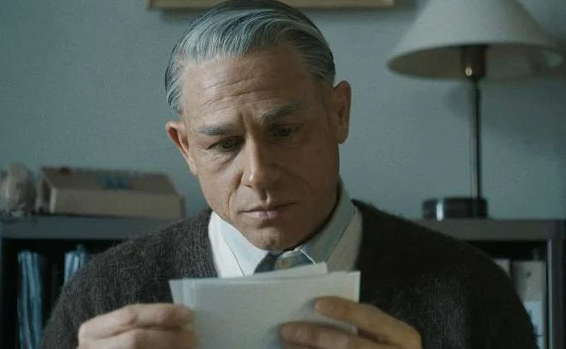
But where do official records confirm this medical interpretation? Where are the documents proving beyond doubt that Gein was unable to control, avoid, or even recognize his actions when he killed those women?
That, in my view, is the show’s greatest flaw: it romanticizes rather than dramatizes. Humanizing the monster to show how untreated trauma and mental illness can lead to tragedy is valuable, but romanticizing his story is not.
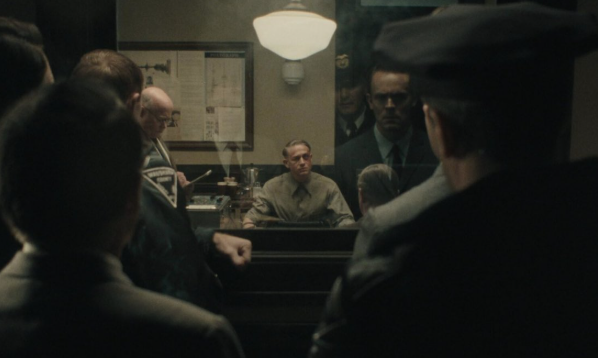
Is Monster Worth Watching?
If you enjoy the tone and themes of the Monster anthology, then yes. The cinematography is strong and supports the director’s vision. There are moments of genuine tension, and at times it feels like a true horror film.
The depiction of the isolated farmhouse also serves as a powerful narrative symbol. And Charlie Hunnam’s performance stands out as one of the series’ strongest points.
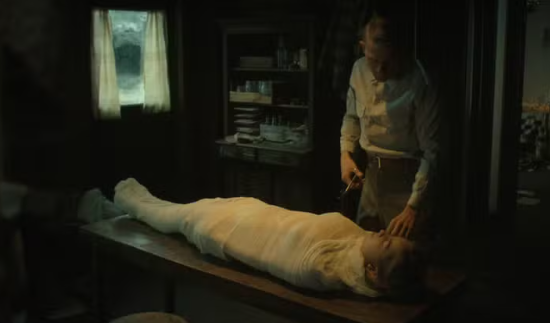
However, do not expect it to be even half factual about Gein’s life. The series intentionally romanticizes his story and explores his cultural impact on society, crime, and pop culture... and in that regard, it succeeds.
On the downside, it gives too much screen time to secondary characters irrelevant to Gein’s story. The frequent shifts between timelines can be confusing, and the inclusion of explicit scenes added only for shock value may feel unnecessary.
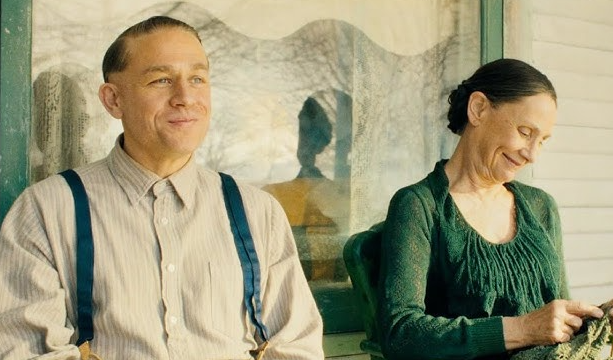
After diving into the mind of the disturbed Ed Gein, are you curious to press play on the series, or does it seem more exploitative than reflective? And if you’ve already watched it, tell us: what struck you most—the performances, the shock factor, or the creative liberties?
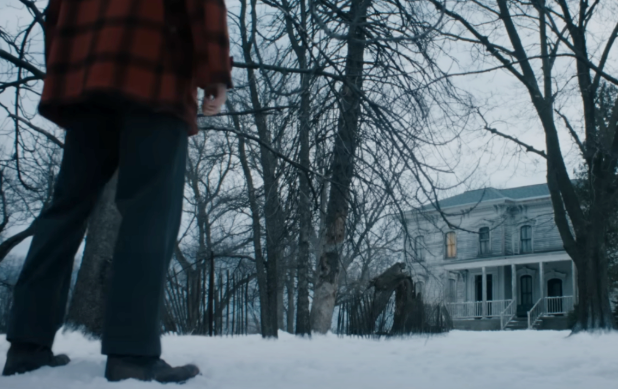













— コメント 0
, 反応 1
最初にコメントする